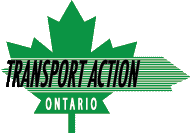By
Transport Action Ontario
|
Latest News ,
Press Releases and Open Letters ,
Publications and Links ,
Urban Transit
Metrolinx, the regional transportation planning agency for the Greater Toronto and Hamilton Area, released an updated draft Regional Transportation Plan in September 2017, with comments due by late November. A collaborative of 12 non-government advocacy organizations spanning the health, environment and transportation sectors, including Transport Action Ontario (TAO), submitted comments to Metrolinx. Our comments can be viewed in the attachment. They include points on improved transit planning, aligning transit with land use density and new revenue tools.
Our letter received good coverage in a Toronto Star article on October 31, including comments by TAO’s Peter Miasek.
Following this article, Peter Miasek of TAO and Gideon Forman from the David Suzuki Foundation penned an Op-ed that amplified on the major points in the letter, particularly on getting politics out of transit planning, the need for new revenue tools and the need to connect land use and transit planning decisions. The Op-ed was published in the Toronto Star on November 8 and can be viewed here.

